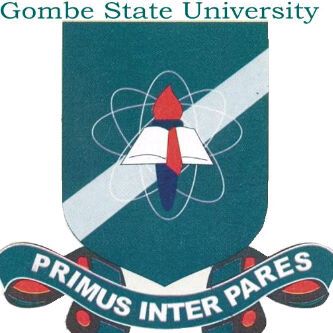The study of genetics focuses on how features are passed down from one generation to the next. It is a fundamental area of biology that is crucial for comprehending many facets of agriculture, including genetic engineering, crop breeding, and animal husbandry.
Related; Agric Keypoints: Agricultural Ecology
Genetics are utilized in agriculture to raise the caliber and output of livestock and crops. Scientists can breed for desirable features, such as disease resistance, yield, and nutritional value by studying the genetic makeup of plants and animals.
Another significant use of genetics in agriculture is genetic engineering. It entails changing an animal’s or plant’s genetic makeup to add new qualities or improve already existing ones. For instance, genetic engineering has been applied to develop crops with higher nutritional value or pest and disease resistance.
Related; Agric Keypoints: Importance Of Agriculture
Understanding genetics is essential for agricultural science students to succeed in the field. You’ll discover the fundamentals of inheritance, how genetics plays a part in improving crops and livestock, and the most recent developments in genetic engineering. You will be better prepared to solve the issues facing contemporary agriculture and to help create effective, productive farming methods if you have a basic understanding of genetics.
First And Second Laws Of Mendel
The father of contemporary genetics is a scientist by the name of Gregor Mendel. In the middle of the nineteenth century, he experimented on pea plants and found two essential rules that describe how features are passed down from one generation to the following.
First Law of Mendel:
The law of segregation is another name for Mendel’s first law. It claims that each person has two copies of every gene, one from each parent and that these copies segregate when sex cells are formed (gametes). In other words, the two copies of a gene separate and end up in different gametes throughout the development of eggs and sperm. As a result, each gamete contains a single copy of each gene.
For instance, there are two potential alleles, or variants, of the gene for bloom color in pea plants: white and purple. A single pea plant may have two homozygous copies of the same allele or two distinct alleles (heterozygous). The two alleles separate during gamete development, resulting in just one copy of the gene being received by each gamete.
Second Law of Mendel:
The law of independent assortment is another name for Mendel’s second law. It asserts that one trait’s inheritance is unrelated to another trait’s inheritance. In other words, the inheritance of one character does not affect the inheritance of another trait.
For example, if we look at two traits in pea plants, such as flower color and seed shape, the inheritance of flower color does not affect the inheritance of seed shape. Each trait is inherited independently of the other.
Mendel’s laws are still used today to understand how traits are inherited in many different organisms. The laws provide a basic understanding of the principles of genetics and are the foundation of modern genetic research.
Related; Agric Keypoints: Meaning And Scope Of Agriculture
Genetics: Cell Division
The process through which a single cell splits into two or more daughter cells is known as cell division. It is a key biological mechanism that enables growth, tissue repair, and reproduction in living things.
There are two types of cell division: mitosis and meiosis.
Mitosis: In multicellular organisms, the kind of cell division known as mitosis is in charge of growth and repair. A single cell divides into two exact daughter cells through this mechanism. Prophase, Metaphase, Anaphase, and Telophase are the stages of Mitosis.
The chromosomes compress and become apparent during prophase. Moreover, the nuclear membrane degrades. The chromosomes line up in the center of the cell during metaphase, prepared to be separated. Sister chromatids split apart and are pushed to the cell’s periphery during anaphase. At telophase, the cell divides into two when the nuclear membranes rejoin around the divided chromosomes.
Maintaining the number of chromosomes in a cell depends on mitosis. The DNA of the original cell is duplicated in each daughter cell, ensuring correct genetic information transmission.
Meiosis: The type of cell division known as meiosis is what allows creatures to reproduce sexually. A single cell divides into four daughter cells through this process, each of which has half as many chromosomes as the original cell. Prophase I, Metaphase I, Anaphase I, and Telophase I are the first four stages of meiosis. Prophase II, Meta Phase II, Anaphase II, and Telophase II follow.
Crossover occurs when homologous chromosomes couple up and exchange genetic material during meiosis I. Genetic diversity is a result of this. The homologous chromosomes are divided during anaphase I, and the cell splits into two daughter cells during telophase I. In meiosis II, the sister chromatids separate, the cell divides once again, and four daughter cells are produced, each of which has half as many chromosomes as the parent cell.
Meiosis is important for creating genetic diversity and ensuring that offspring receive a combination of genetic material from both parents.
In conclusion, cell division is an essential biological activity required for development, repair, and reproduction. Meiosis and mitosis, the two types of cell division, carry out various tasks within organisms. Meiosis is in charge of producing genetic variation, while mitosis is in charge of keeping the number of chromosomes in a cell constant.
Genetic Crossing Involving Homozygous And Heterozygous Traits
When two people who possess different genetic features mate, the resultant child will have traits from both parents. Punnett squares can be used to forecast the outcome of a genetic crossing involving homozygous and heterozygous features.
For a given gene, homozygotes have two copies of the same allele, whereas heterozygotes have two distinct alleles. One copy of the homozygous individual’s allele and one copy of the heterozygous individual’s allele are passed down to the progeny in a genetic cross between two homozygous individuals.
For instance, if a homozygous dominant (AA) and heterozygous dominant (Aa) person mate, their kids will all get one copy of the dominant allele (A) from the homozygous person and one copy of either the dominant or recessive allele (a) from the heterozygous person. The offspring will have the heterozygous genotype Aa as a result.
A Punnett square, which is a straightforward grid that displays the potential allele combinations that the offspring can inherit, can be used to forecast the ratio of the various genotypes and phenotypes in the offspring. Punnett squares can be used to calculate the probability that a child will inherit a given trait from each of their parents.
In conclusion, it is crucial in agriculture for selective breeding and genetic improvement of plants and animals to be able to forecast the outcome of a genetic crossing including homozygous and heterozygous features. Agricultural scientists can develop new and improved varieties that are more productive, disease-resistant, and adapted for particular conditions by understanding how features are inherited.












